Programmes
We aim to build up students’ technical and soft skill competency through 6 modules comprising of STEM, Robotics, Coding, Artificial Intelligence, Lego Robotics Competition & Project presentation.
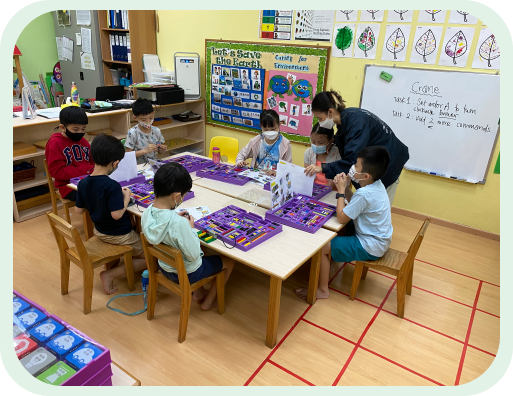
MetaRobot & Young Engineers aim to build up student’s technical and soft skill competency through 6 modules comprising of STEM, Robotics, Coding, Artificial Intelligence, Lego Robotics Competition & Project presentation.
Students get to expose to many types of coding language varying from Scratch Junior, Scratch and Python.
In Artificial Intelligence they will be taking up the module on machine learning to experience how artificial intelligence works in real life applications.
In STEM and Robotics, they will experience building models that illustrate real world applications such as Elevator, Conveyor Belt and Laundry Machine.
The students can also participate National Robotics competitions (NRC) and First Lego League (FLL). These are pre-requisite to Direct School Admission of their preferred secondary school.
We helped to prepare the students for their DSA interviews as well as creating a portfolio of all the projects they have done with our curriculum

Coding aims to impart the problem-solving, mathematical and computational thinking skills of the students. Students will learn to design games of their own and also create different commands for their robots.
MetaRobot Data Scientist focus to develop students with one of the most important trends in the industry e.g. artificial intelligence and machine learning. Data Scientist is one of the most sought-after skillsets in this 21st century. It is an interdisciplinary that challenges students to extract their knowledge on scientific methods, processes and algorithms.
In this programme, we aspire to introduce students to the world of artificial intelligence with machine learning. We intentionally picked real-life examples in order to relate their everyday experiences.
MetaRobot Maestro is designed to first prepare the students with obstacles challenge course. With experience in solving obstacles from past NRC or FLL competition challenges, the students will be well-equip with the new challenge thrown to them for that year.
Participating robotics competition is one of the pre-requisite for entry into direct school admission (DSA) into their preferred secondary school. The competition coach will prepare a portfolio on the students’ profile to be submitted to school. Parents will use this portfolio to apply if Robotics is one of their DA choice.
MetaRobot Software Engineer provides another level of LEGO robotics using Scratch block coding and Python syntax coding to control the models which the students are building. Computational thinking is one of the critical skillset which is essential to every software engineer’s development.
Acquiring this skillet will ensure that the students will confidently apply their knowledge to control and create any kinds of hardware with any programming language such as Scratch and Python or even Javascript etc.
Young Engineers is a programme that is changing the way children think about science, physics, engineering and mechanics, Young Engineers has been developed in Israel and is taught in over 45 countries around the world. The enrichment programs comprise of a variety of different programs that can be used to teach science, technology, engineering, math (STEM).
Children joining the educational community can learn and enjoy arithmetic, physics, mechanical and software engineering, coding, and robotics.
(3 TO 16 YEARS OLD)



Our learning agility ensures your child the best posible results to scale and improve emotionally and physically.
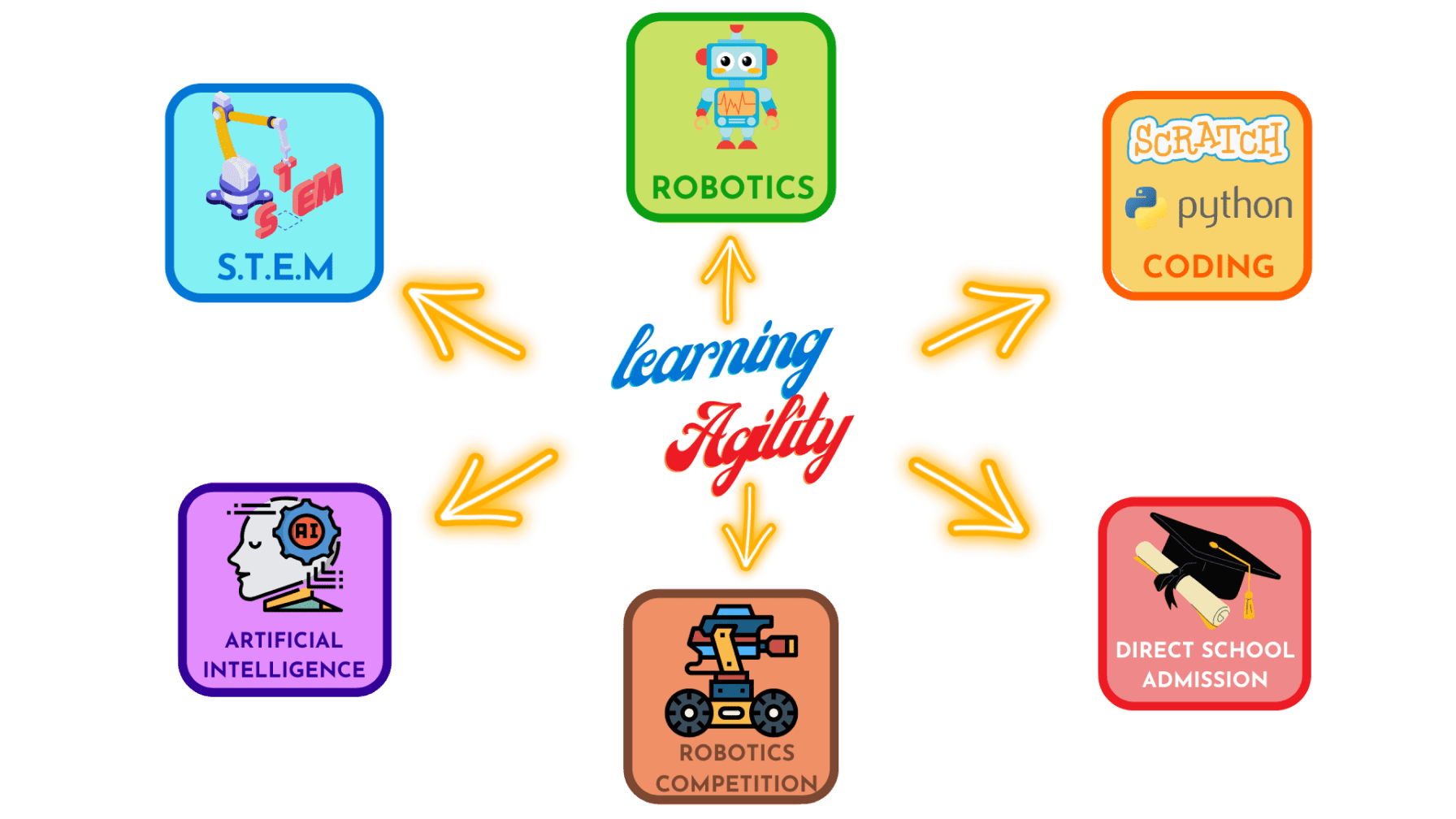
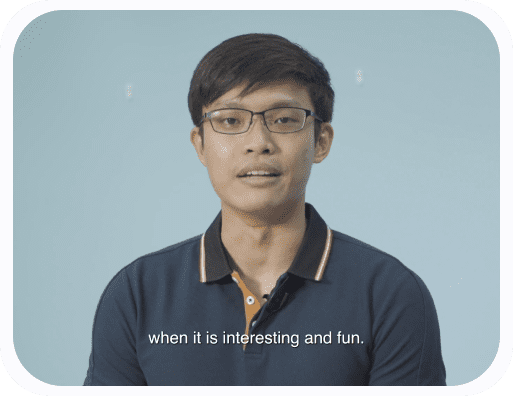
We believe in making learning fun by combining education with entertainment. Our programs include building models with Stem principles and coding. Through our programs, students will learn critical core skills such as computational thinking and logical reasoning. Besides these critical core skills, they are also developing learning agility.
So this means that they are able to apply what they have learned in different contexts and scenarios. To find out more about how we can equip your child with these skills, click the button below.
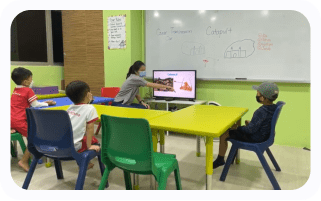
Programme Objective:
This programme aims to equip young learners with the fundamentals of building through a variety of LEGO®models. With the exposure to building models using LEGO® at a young age, children are able to further enhance their fine motor skills
Getting The Foundation Right
With specially created models that appeal to young learners, children will also be exposed to the concept of creative leisure. We place an emphasis on teaching planning and execution skills, as well as promoting flexibility and social interaction among our students. Students are also encouraged to play as a group which helps to develop their social, leadership, creative thinking, and emotional intelligence skills, among many others.
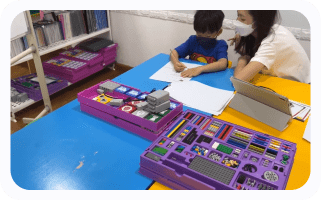
Programme Objective:
This programme is the launchpad for children to explore their interest in STEM (science, technology, engineering, and mathematics), and an introduction to computational thinking via basic robotics coding projects.
Testing The Waters
Children will be introduced to basic STEM mechanisms found in everyday objects such as electric fans, washing machines, traffic lights, etc. Furthermore, they will explore basic robotics coding
through Young Engineers’ proprietary tangible coding blocks, and Scratch Junior’s introductory visual programming Language.
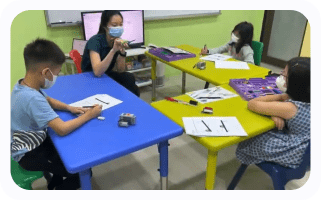
Programme Objective:
High Ranker is a progressive programme from Ranker. Its key objective is to help children develop richer knowledge and better application of STEM principles, improve on robotics coding, and gain further computational thinking skills. Artificial intelligence, such as machine learning, is one of the highlights of this programme.
E = MC2
Children will progress to advanced STEM mechanisms, and study real-world structures such as elevators, ferris wheels, cable cars, etc. Besides learning the principles of physics, children will also be exploring basic game design using the Scratch 3.0 interactive platform, as well as training machine
learning systems.
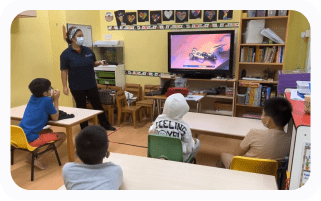
Programme Objective:
The Ace programme promotes children to the next level of robotics coding, software coding, and artificial intelligence. Children will beequipped to solve more sophisticated real-world problems with analytical and creative thinking skills. The group-based projects in this programme are aimed to help children develop entrepreneurial and leadership skills.
Level Up!
In the Ace programme, children will be exposed to more complex STEM mechanisms that would require teamwork and collaboration to reach a resolution. The next level of computational thinking involves having children apply more complex coding principles to achieve the functionality of the models which they are tasked to build. With the Advanced Scratch 3.0 module, children will also be challenged to step up their game designing skills.
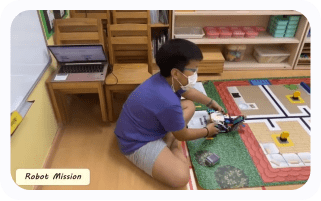
Programme Objective:
The King programme prepares children for transdisciplinary thinking through various complex tasks. These tasks require children to connect ideas and disciplinary content in STEM (science, technology, engineering, and mathematics) to solve real-life problems. Children will also learn a few programming languages, and the application of their skills on different platforms.
Like A Pro!
The King programme is specially designed to ease children into learning the characteristics and technicalities of a programming lanquage. By applying the robotics knowledge and skills acquired in our preliminary programmes, children are able to easily grasp the programming languages, used among industry experts, that are taught in this programme.
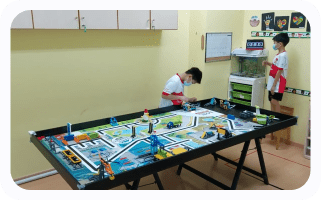
Programme Objective:
The Legend programme prepares children and teenagers to take part in competitions that are globally recognised. The competition training will challenge students to think and develop creative solutions to a real-world problems designed by international associations such as For Inspiration and Recognition of Science and Technology (FIRST) and World Robot Olympiad (WRO). Through the training and competitions, learners will experience growth and development in both technical and 21st-century skills.
Thriving Beyond Coding
As this is a more intensive programme, learners will be required to prepare to commit and persevere, and to accept failure as part of the learning process. Our experienced instructors will guide learners through the process, and equip them with the necessary skills to adapt, adjust, and ultimately, to achieve success.
It is a combination of education and entertainment. Young learners absorb best when they are having fun. At STEP, we strive to create a motivating environment by using a progressive task model to ensure our students are appropriately challenged. These tasks come in the form of interactive and game-based learning activities.
Technology and trends are constantly evolving, and we recognise that knowledge acquired today may be irrelevant in the future. At STEP, our curriculum is thoughtfully designed to equip students with the 21st-century skills, as well as learning agility, required to keep up with the changes.
Technology permeates every aspect of our lives and digital literacy is becoming increasingly important. Exposing children to coding at a young age has a plethora of benefits; they will learn to solve problems and develop sequencing skills that are essential for their academics and daily life.
Parental involvement in a child’s education is crucial for their success. When parents are engaged in their child’s academic life, the child will feel supported and develop a lifelong love of learning. We encourage conversations with your child about what they have done in class that are structured to be related to our daily life.
The convensational way of learning requires children to regurgitate what they learnt. Children memorise these information but are unable to find meaning and link the new knowledge to real-life scenarios.
At STEP, our lessons are structured to challenge students to think critically on the application of concepts learnt rather than passively taking in information and memorising it. Our students are guided to engage in transdisciplinary thinking and problem-solving to achieve the intended learning outcomes.
With a longer commitment with us, we are able to plan ahead and discuss the progression for the student for the entire year. The development will come in the form of an individualized development plan where we identify the strengths and weaknesses of the student and formulate action plans to enable each student to reach their potential.
We require a certain level of commitment from our instructors. As much as possible, instructors remain with their students for the entire course. This is to ensure that instructors are familiar with the students and can engage them effectively.
There is no minimum number of students in the class, but we encourage peer learning in our lessons. may recommend timeslots to ensure that group activities can take place to provide learning opportunities and for positive compromise and understanding of working in a team.
This question has been bothering a lot of parents but they are embarrassed to ask. Glad you brought it up. In the context of Singapore, applied learning is more widely used than STEM. STEM in our curriculum is focusing on Physics, Mathematics and mechanical engineering principles. Our LEGO models are intentionally designed to demonstrate real-world situations where Science and Mathematics principles are all around us and to make students aware of them consciously.
Our Robotics coding are mainly based on mechanical, electrical and software engineering principles. In Robotics coding, there is usually a “brain” residing within the LEGO models which in technical terms can also be known as “smart hubs”. The programming language from the tablets or laptop will be sent and translated into a commands which the brain will understand. The “brain” will execute these commands provided by the coder, in this case, our students.
On top of that, computational thinking is one of the important skillset where the students will be guided to think like a computer.
In essence, STEM Robotics build up their general knowledge of real-world scenarios while Robotics coding tests their technical application on how computers or machines operate in the real-world application.
In the current Robotics and Coding enrichment schools for children, 30% are focusing on Robotics Coding. The other 70% schools are engaged on software coding. So what is the difference? The simple explanation is hardware vs no hardware.
Robotics coding and software coding are imparting different skillsets where both are essential. In the case of Robotics coding, a hardware LEGO model is needed. This ensures that a certain level of motor and spatial visual skillset is required before they attempt on the computational thinking and task of problem solving given to them on that challenge. In LEGO robotics, it has the overwhelming effectiveness of increasing attention span and improve the focus on tasks completion. In the past, LEGO is only used as toys to entertain and keep the kids occupied. LEGO is now used effectively as both toys and education where edutainment is one of the common education philosophy.
In software coding, no hardware will be built or provided. Instead, they will only be given a tablet or laptop and of course their creativity to design animation and games. Software coding ensure a wider boundary for exhibiting their creativeness where they are not bounded by any hardware limitation. The students will be working on platform that supports coding into application such as animation, games or mobile apps via Scratch, Python or Android.
Oh wait a minute, isn’t laptop or tablet consider hardware? Well, indeed they are but this is not exactly what we refer to as hardware. Hardware is the piece of equipment that can be programmed or coded using a tablet or laptop to perform a certain task. In our robotics coding curriculum, LEGO and its computing accessories are our hardware. In other Robotics curriculum, they could be using Microbits, Arduino or Raspberry. This will be packaged with a casing to look like a Robotic outfit. The curriculum will be imparting the students on computational thinking on how to task the Robots to perform certain functionality or tasks.
Well, we do not wish to hide the fact that we do charge for our trial class. And the reason why we do so is simply because trial class students get to enjoy what our regular class students are doing and more. They will have a dedicated set of educational tools worth more than $800 during the trial class. (They do not share with any other students.) This will ensure our trainers could have a better assessment of their personal ability and provide the feedbacks to parents in order to be able to assign them to the right level of classes.
On the other hand, those coding schools which provide free trial lessons usually need just a simple tablet or laptop to conduct their coding classes. The cost of conducting a software coding lesson vs a Robotics coding lesson is much lower.
Most of the parents are willing to invest in a trial class for their child in order to assess their interest level. We do not force parents to sign up for our class if the child does not have any interest at all.
In both STEM and Coding curriculum, LEGO Robotics is the overwhelming choice for most parents and schools. Students are exposed to their building and motor skills where they need to visualize and build the models based on a 2D building sheet. This provided the students with another important skills on spatial visual and reasoning. There are some hidden angles on the 2D build sheet which require the student to exhibit their spatial visual and reasoning in order to complete the model. LEGO Robotics are one of the few curriculum that is able to provide them with such spatial reasoning.
Most of the open-source Robotics came with ready-made Robots. Their lesson’s objective is to focus mostly on coding and computational skills. They do not necessary provide STEM theory or principles even though some of them claim that they do so. Due to the ready-made structure, they could be using the same robots for 6-10 different lessons but teaching different computational thinking concepts and coding commands. Some of our current students came from these robotics schools and parents complained that their child lost interest after a few lessons.
As for LEGO Robotics, students rarely get bored because they are building different LEGO models to demonstrate different situations of real-world applications. This is the reason why LEGO is not only the biggest toy manufacturer. They also claimed to be the biggest education institutional since they using LEGO tools to disguise entertainment as education.

One of our main education philosophy is learning agility. In the rapid changing world, students are subjected to constant challenges of new evolving technology. We believe by exposing them to these variety of learning opportunity, they are better equip to prepare for whatever challenges being brought to them.
Our learning modules consists of STEM Robotics, Robotics Coding, Software Coding, Machine Learning, LEGO Competitions and Direct School Admission. Our objective is to prepare them to a holistic experience which ultimately leads them to their desired secondary school admission.
In the past, excelling in one subject is sufficient to get their career forward. However, for the 21st century, it will require more than 1 subject as the 4th generation of industrial revolution focus on multi-disciplinary fields to excel.
Yes, and very much so. Part of our Robotics curriculum are acquired from our Young Engineers franchise where our Young Engineers programmes are endorsed by the Harvard Graduate School of Education. We are enhancing and localizing the global Robotics curriculum into real-world situation that are commonly used and seen by our students. We understand how our local students perform and structure our lesson’s objective to be able to provide a fair assessment of their holistic ability. We have curriculum partners who are real engineers and are able to design and create challenges to evaluate their problem solving ability. In our lessons, we have more than 300 different LEGO models and growing that demonstrate different aspects of STEM and Coding principles.
Some of the LEGO Robotics curriculum provider are using the direct curriculum from LEGO education especially those who conduct for schools. There is nothing wrong with that except that they are limited with only a few lessons. LEGO education also tends to provide simple models that does not fully challenge their spatial visuality.
We also conduct our curriculum in local as well as international schools. Our trainers to student’s ratio is 1: 20 (max) or 1: 12 (min). There is a limitation as to what each student will absorb or learn from these lessons. Let’s be honest, trainers will not be able to put all attentions on each student.
However, in our class lessons, our trainer to student’s ratio is lower at 1:2 or 1:4. If the class size increase, we will add another trainer to assist the main trainer with the class. This will ensure the students learnings are not compromised.
Many of our students took up Robotics CCA as well as our Robotics curriculum. Some of them have been with us for 2-3 years. Our curriculum will ensure that they are learning all the different aspects of STEM, Coding, Artificial Intelligence without overwhelming them.
We do not repeat the same models in any of our class. However, some of the models might look similar, but the construction and lesson’s objectives are different.
In our class, we put more emphasize on STEM and coding principles for the kids. The construction of the models contributes just 25% of our lesson’s objectives. The students will be challenge to understand some of the key STEM or coding principles and applying their knowledge into improving their model construction. We have more than 300 different LEGO models ranging from different level of difficulty and application.
As explained, the models might look similar, but in our curriculum, we have integrated a hybrid of STEM and Coding into a single module. As a result, the students will be exposed to both principles even though they thought they are building similar models.
The basic assessment will only reflect the student’s current progress and will not include an individualized development plan and roadmap.
The charted roadmap is given to show the progress of the student in the programme and his/her subsequent level in the developmental pathway.
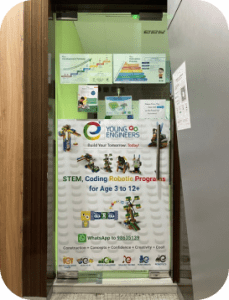
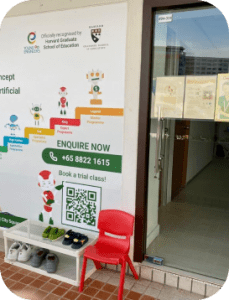



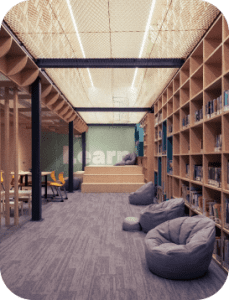
If you are interested to start MetaRobot & Young Engineers trial class for your child. Kindly fill the form below and let’s get you started
If you are interested to start MetaRobot & Young Engineers trial class for your child. Kindly fill the form below and let’s get you started
If you are interested to experience a class for your child. Kindly fill the form below and let’s get you started
If you are interested to experience a class for your child. Kindly fill the form below and let’s get you started
If you wish to check out our class schedule at your preferred location, you can click on the respective center to reserve a slot!
If you wish to check out our class schedule at your preferred location, you can click on the respective center to reserve a slot!





Coming Soon